Among the huge number of flowering plants there are specimens without a bright appearance and spectacular colors. However, even despite this, are an important part of the garden composition on any plot. Such cultures can be attributed to the blue and its main type of blue blue - a plant that differs not only in a rather elegant appearance, but also notable medical qualities.
As a garden plant, Blue Blue Grass is grown relatively recently, but in a short time she managed to conquer the heart of experienced gardeners around the world. The main advantage of the Sienia is its unpretentiousness and fitness absolutely to any climatic conditions.
In this article, we will look at the features and description of the blue blue, we note the most common and popular varieties of this plant. And also tell me about the main nuances of the agricultural machinery of the growing blue blue in the garden plot.
Features and description Sienia Blue
Blue Blue is the nearest relative to all famous phloxes that attract the attention of gardeners. These two cultures belong to one large family of Sovyukhovy. However, this similarity between the blue blue and floccam ends. Blue Beauty Blue has more modest flowers and limited number of inflorescence shades. In nature, most of the species of the Blue Plants are found in North America, some species grow in countries in Europe and Asia, in the central part of Russia and even in the southern regions of Siberia. This plant prefers to grow in forests, undergrings, swampy places and even on the mountains in conditions of temperate climate. On the territory of Russia most often in the wild, there is exactly blue blue.
There are several historical facts about this plant:
- First of all, the scientific name of the blue Blue "Polelemonium" has an ancient Greek roots. It is literally translated as "Battle, Battle, Quarrel". Between the ruler of Ponta Pontoumon and Filletuer from Cappdidation there was a quarrel due to the one who opened the healing properties of this plant. It is from this that this name happened.
- Ancient scientist Dioscride once described the blue blue as a great remedy for the treatment of wounds, abrasion, cuts.
- This plant used to be associated with Sleep Sleep Jacob, who in the desert had a dream, where angels rise to blue skies and descend from there on the stairs. Blue flower Blue together with horizontally located leaves along the stem looks like a staircase, where the inflorescence itself symbolizes paradise. For this reason, the bluehouse is often grown in the territory of the monasteries, churches and abbey.
- In the 16-17 century, the plant has become popular among the aristocracy and other sectors of society. Blue began to plant blue on the flower beds and along the gardens and borders.
- Thanks to the bishop, Henry Compton Blue Blue hit the territory of Europe.
- In the Middle Ages, this plant was mentioned in connection with the witches, as the smell attracts cats.
Siahi blue description:
- Blue blue is a perennial herbaceous plant that can grow almost in any conditions of the northern hemisphere with a temperate climate.
- Blue root Blue is a creeping rhizome, which is pretty thick and has a large number of root doves. Thanks to this, the plant can walked from place to place, but this process occurs quite slowly.
- Stems Shenii Blue reprehension and height can reach 40-120 cm, thanks to this flower can be grown in any garden composition.
- All stems from the blue blue preemptive naked, without leaves. Covered with a small flush.
- Painted leaves of the plant are located at the bottom of the stem, and throughout the stalk you can see small pointed leaves, which can be 17-20 pieces. They are attached to the stalk almost horizontally.
- The color of the leaves can be different, depending on the specific grade of the plant. At the bluehouse azure or blue there is a variety with motley foliage - Variagates.
- Flowers are assembled at the highest in the form of blurred or private inflorescences. All flowers resemble their shape wide open bells and can be blue, bright blue, white.
- Blue Blue flowering falls on June-July and lasts approximately 45-50 days.
- This plant has a very pleasant and gentle aroma, which attracts bees. That is why Blue Blue is considered an excellent honey.
- Fruit - box with small black seeds.
- From ancient times, blue is considered a healing plant, the soothing effect of which is stronger than the famous Valerian several times.
- There are several names of this plant in the people: Valerian Greek, Blue St. John's wort, lean grass.
Variety of Sienii Blue varieties
To date, there are about 50 different species of representatives of the Sovo family. The most popular and common view is blue Blue. Besides it, it is possible to note the following: Blue acute, Multi-Sonyuy, North Sinuha, creeping blue.
Popular Sienii Blue:
- Blue Blue Alba. This is a decorative herbaceous plant, which in height can reach 70-80 cm, less often grows up to 1 meter. The variety is unpretentious and drought-resistant, requires minimal care and this plant does not need shelter in winter. Leaves green disseated shapes. Flowers are assembled at the top of the top and are the inflorescences of the average size of white. The flowering of the Alba variety begins in July-August. You will get beautifully blooming bushes Sienia only at sunny plots.
- Blue Blue "Bambino Blue". A long-term grassy plant is height up to 70-80 cm. The skell of the blue of this variety is a bit bent and covered with beautiful dissected leaves. The plant is steadily on temperature drops and can do without watering for a long time. It blooms with large bright blue colors, which are collected in tight-shaped inflorescences.
- Blue Blue "Brise D Anjou". A more exotic plant variety, which is distinguished by beautiful and bright colors, as well as rather unusual coloring leaves. In the height, this variety of the blue can grow to 60-70 cm. Foliage dissected green with cream border. On the cushion of foliage with a beautiful cloud, gentle blue flowers soak, the bloom of which begins July. This is a drought-resistant grade, which can perfectly feel in areas with close grounding of groundwater.
- Grade "Stairway to Heaven". Very bright and unusual variety of blue blue. It is low, can grow up to 40 cm. Summer foliage has a cream kaima, and in the fall of the pink kaima. Flowers a plant with gentle lavender inflorescences in June-July. More demanding variety in the care and place of growth.
- Cornihi variety Blue "Purple Rain Strain". The plant of this variety is grown by a compact and beautiful bush. The main feature is a foliage that changes its painting: in the spring they are bright purple, in the summer they become green, and fall again in the fall. In shape they are perishes. In height, the plant reaches 60 cm. Flowers beautiful lavender-blue flowers.
- Blue blue "Snow and Sapphires". The blue of this variety is in height reaches 60 cm. Different with a motley colorful leaves: Green leaf itself, and Kaima creamo-white. Flowers in the early summer with beautiful purple-blue flowers that have a very pleasant fragrance.
Blue blue reproduction: the most common ways
Blue blue is worth growing on its plot. You will receive not only a beautiful and bright plant, but also a whole natural aid kit at hand. If you are gathered to breed this plant yourself, it is necessary to initially find out the features of the most common methods of reproduction. These include the cultivation of the blue blue of seeds, reproduction with green cuttings and the fission of rhizomes. Learning the nuances of all ways, you can choose the most convenient and suitable for you.
Seed blue blue breeding
- Sinyukhi Blue seeds lose their germination every year, so it is best to suck them under the winter immediately after collecting. You can also search them in February after the stratification process.
- It is best to sung seeds under the winter, as in this case you will get a flowering plant for a couple of weeks earlier.
- To do this, prepare the soil on the selected area. Dispoint, add overwhelmed manure and complex mineral fertilizer.
- After that, make small grooves, the depth of which should be no more than 3 cm.
- Sew seeds in them.
- With this crop seedlings grow very slowly. First, the root rosette is formed and only for the second year you will grow inflorescences and see the blooming blue.
- Seeds of this culture can be seeded at seedlings, however, it is worth it to hold their stratification.
- To do this, prepare a small container with nutritional soil. Press on the surface of the seeds of the blue blue and spray slightly sand, approximately 1 cm. Next moisture the soil and put the tank in the refrigerator by 1.5-2 months.
- In the process of stratification, it is recommended to periodically moisten the soil.
- After graduation, move the containers to the windowsill. About 2-3 weeks you will receive the first shoots of the plant.
- Upon reaching the seedlings of a normal size, they can be transferred to the selected area.
- Blue Blue perfectly multiply by self-sowed, as the seed box is bursting and the seeds are scattered around the plant.
Blue shine blue breeding
- With this method you will get a flowering plant much earlier.
- The workpiece of Chenkov must be engaged in the summer, best at the beginning. If your acquaintances are growing beautiful blue blue, just ask a small twig. The same applies to the case when you yourself have an adult plant.
- For Chenkov, you need to cut the tops of the shoots from the root renewal renewal. The approximate length of one cutter should be 10-12 cm.
- Before rooting, remove all the leaves from the bottom of the cuttings and treat them with a solution of the rooting agent.
- Next, on the selected area, put the resulting cuttings and each cover with a plastic or glass bottle (bank) to create a greenhouse effect.
- In the process of rooting, the cuttings must be regularly ventilated and water.
- Clean the shelter only after the full rooting of Sienii blue seedlings.
Breeding Sienia Blue Delivery Rape
- This method is also very fast and painless.
- They spend it early in spring until the moment of active growth and the appearance of the kidneys on the plant.
- Bustal division is most often rejuvenating. Old blue bush blue. The approximate life of the plant in one place is 5 years old, the bluehouse with motley foliage grows in one place a little longer.
- Carefully dig a bush of the blue, trying not to damage the root system.
- Next to a sharp knife or shovel divide it into several parts, the main thing is that each decene has healthy roots and kidney to resume growth.
- Prepare places for landing the decene, adding complex mineral fertilizer to the soil and a little peat.
- Peread seedlings and inspire the rolling circle with dry peat or sawdust.
- In the first days after planting, it is necessary to abundantly water the plants, and the mulch will help you keep moisture for longer.
Stages of preparation before landing blue blue
You can easily grow blue in your site blue, but it is important for this to carefully prepare. Be sure to pay due attention to the choice of seedlings or seedlings of the Siyuhi, as well as the search for its site most suitable for the growth of this culture of the place. Also remember to handle and easily the soil.
Stage 1. Selection of varieties and seedlings Sienia blue
- First of all, you need to decide what kind of Sieniukhi sagoe to buy. It is important to navigate the varieties that are adapted to the conditions of your climate.
- Selection of Sienii Blue varieties Base on the future plants growth site. Peppermond plants are more demanding on lighting, so it is important to take into account. Especially if you want to get a beautiful and flowering plant.
- Different Sienii Blue varieties grow at a height of 40 to 100 cm, so based on your choice on the planned garden composition. The lowest varieties are perfect for landing along the garden tracks or the edge of the flower beds.
- It is also best to acquire seedlings or seedlings of the blue blue in their friends or in specialized garden centers. By purchasing familiar, you see the end result. Saplings in nurseries are most adapted to growing conditions, moreover, you can consult with a specialist about the peculiarities of growing specific plants.
- Before buying, carefully inspect the seedling. It should not be visible damage, as well as signs of diseases and pests.
Stage 2. Selection of Places for Landing
- Blue feels perfectly perfectly in conditions of moderate climate and is considered a rather unpretentious plant, however, a full-fledged growth and magnificent flowering of this culture depends on the right planting place.
- This plant prefers to grow on wet, but fertile soils. They are not terribly close to groundwater.
- It is important to choose a place that is flooded with sunlight, but a small shadow is hidden in the sun. Note that large quantities of light are important for damp varieties. Only so you will get a beautiful color of foliage.
- For tall grades, provide a place protected from wind and strong drafts. From strong gusts, shoots can break.
- Blue can be planted on flower beds and flower beds with other plants, as well as to plant the trees under the trees.
Stage 3. Choice and soil preparation
- Blue Blue prefers to grow on fertile light soils.
- It is also important that the selected place is quite wet. It is perfect for a place in lowractions or near water bodies with a good drainage.
- This plant is particularly demanding at the level of soil acidity. If the land on the selected area is very salt, the blue will not grow.
- Before planting the plant, it is important to carefully switch the place you have chosen. It is best to do it in a couple of weeks before landing Sieniuhi blue seeds.
- When processing the soil, add to it overwhelming, complex mineral fertilizers and peat.
Landing Technology Blue Blue
- Many experts recommend landing blue blue to spend seeds under the winter. So they pass natural stratification and hardening.
- Before sowing, be sure to carefully prepare the soil. Pull up the site about the bayonet shovel, while adding a bit of overwhelmed manure and nitroposki.
- If the soil on your site has increased acidity, add 200 g per square meter of lime. This will help fertilizers better to worry and will contribute to the normal growth of the Sinohi.
- Split a garden and compact it.
- Seeds need to sow at a constant air temperature of 2-3 degrees, when constant freezers are installed.
- Make a groove with a depth of 1.5-2 cm and drink seeds in them about 1 gram per 1 meter square.
- After shooting with a very high percentage, the seedlings can be switched.
Growing Agrotechnics Blue: Secrets and Nuances Care
Blue in care is absolutely undemanding, however, for full growth and flowering, the plant still needs attention and care. First of all, it is important to follow the humidity of the soil around the plants and for its purity, and also fight pests and diseases in a timely manner.
Watering
Blue is capable of growing even in the drywalk itself and in hot weather. However, subject to regular and abundant watering of the site. You can navigate on the surface of the soil around the plants - if it is dry, be sure to pour. In a particularly hot, it is recommended to water more often and rich. In the evening, it is possible to provide a plant with a plant that beneficially affects the general condition of the plant.
Loosening and mulching
After irrigations, the soil is recommended to loosen, just to do it very carefully. The root system of the blue blue creeping and grows horizontally in all directions, so you risk it to damage it. It is also important to delete all weeds, so your plant will look more decorative. The soil around the blue can be inspired, so you save moisture at the roots of the plant. A dry peat or sawdust is used as a mulch.
Undercalinking blue blue
For full growth, Sienii is important to make fertilizers. The first to feed must be necessary immediately after the snow removal and the thawing of the soil. At this time, it is best to use complex mineral fertilizer. Which is made right under the roots. In the spring before the start of flowering under the plant, it is recommended to make superphosphate. If you make fertilizer once every summer, you will extend the flowering of the blue. Once for the season, you can use a cow's solution, only to properly follow the proportions so as not to burn the plant.
Trimming
After the end of flowering, it is recommended to trim at a level of 25 cm all shoots, thereby you allow the root system of blue blue. This is done by the method of mowing. At the same time, be sure to leave one bush for collecting seeds. Before the beginning of winter, the plant removes all the shoots, leaving only heights with a height of no more than 5 cm. You only remove the blurred varieties of Sonyuhi, and their foliage is very decorative even without colors.
Fighting pests and diseases
Blue blue is characterized by very good resistance to affecting various pests and disease appearance. On normal growth of the plant can only be affected by irregular watering, resulting in a delay in the development of the plant and oppression. To normalize growth, it suffices to observe watering mode.
Blue Blue - Healing Properties
Since ancient times, Blue Blue has been known as a healing agent from various diseases. By a large number of Blue reviews, both a folk healing agent is used now. In addition, many scientists are interested in studying its properties and are looking for use in medicine.
- In therapeutic purposes, rhizome plants are used with roots.
- Of the entire assembled material, ragners and infusions are most often prepared, which are then used as expectorant drugs with bronchitis, as a soothing and painful agent for stomach ulcers, to reduce blood pressure, it is used in the treatment of tuberculosis, as well as to normalize sleep.
- It is necessary to harvest the raw materials after the ground part is frowning.
- Carefully dig the roots of the blue, try not to confuse them with the root system of adjacent plants. Decrace from the ground and quickly rinse with water. Long-term washing of raw materials is not recommended, since all useful substances are washed in this process.
- Next, harvested raw materials need to dry at a temperature not higher than 60 degrees.
- After drying, all the raw materials are crushed.
- For the preparation of infusion, 1 tbsp. Mixtures pour 1 glass boiling water and insist for 1 hour. The donkey is tested and take a quarter of a cup 4 times a day after meals.
- To prepare a decoction, pour 1 tbsp. Mixes 1 cup of boiling water and boil on a water bath for about 20 minutes. After that, the decoction is resurrected and take 1 tbsp. 4 times a day after meals.
Using blue blue in landscape design
Blue Blue is a real find for landscape designers, as this plant is characterized by large decorativeness and unpretentiousness in care. It can be used in the following options:
- Suitable for decorating mixtores, give preference to high varieties.
- For group landings with other blooming plants (for example, with bells and iris).
- For flower beds, only in this case you need to monitor the moment of complete blowing to cut the plant.
- Suitable as a curb plant.
- Blue is an ideal plant for mountaineering.
Stock Foto Sienia blue in landscape design
It is more clearly to see all the features of the appearance and use options in the landscaping of the site can be on the photos proposed below.
Blue blue is a gentle and elegant plant that will not require much effort during cultivation. As a result, you will get a flowering plant and a whole storehouse of medicinal properties on your site.


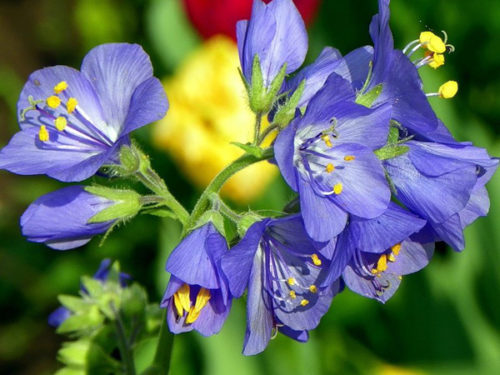
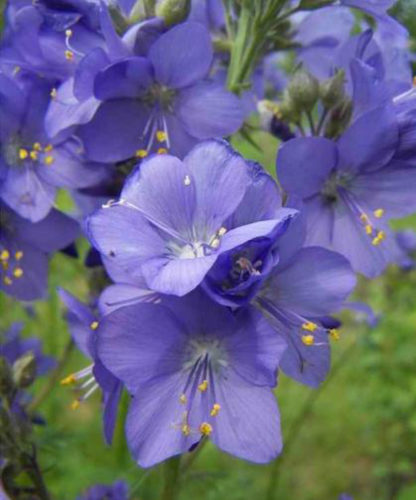
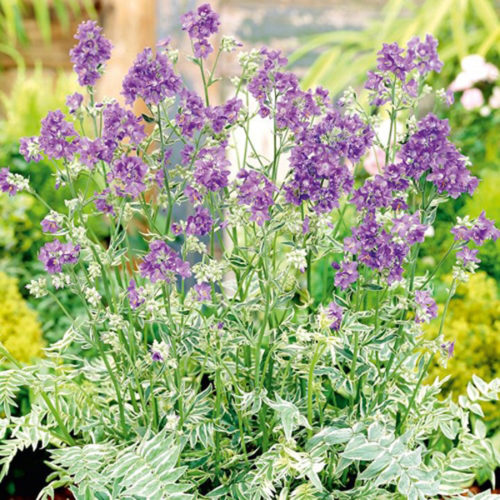
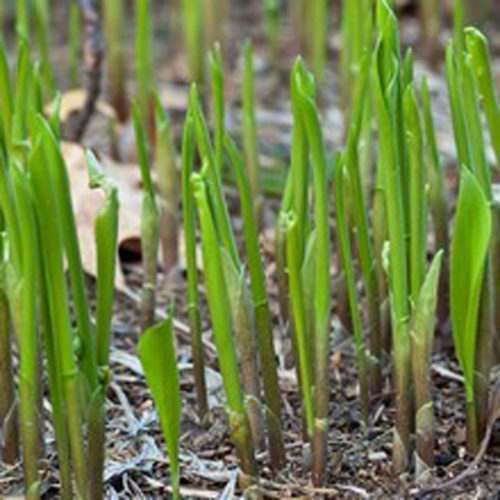

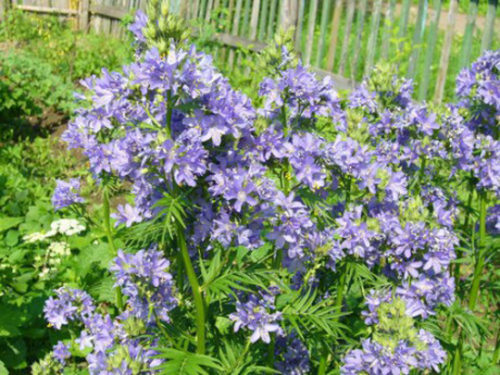

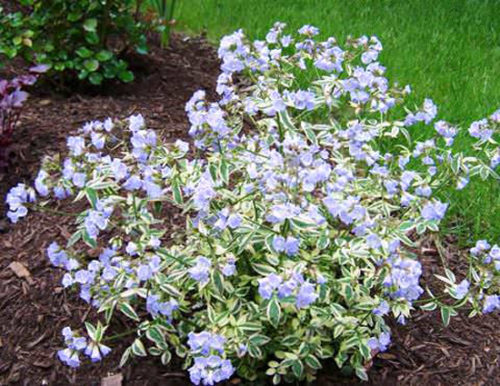
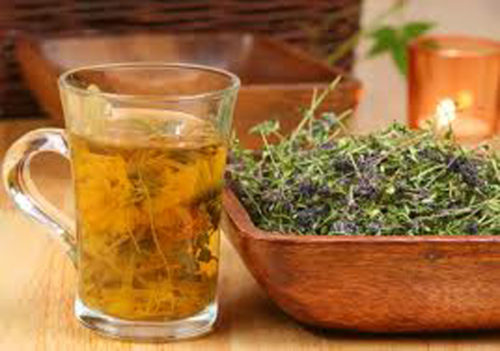

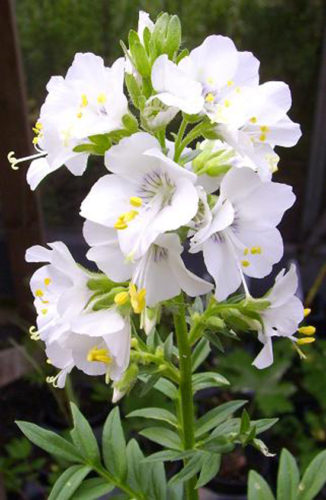
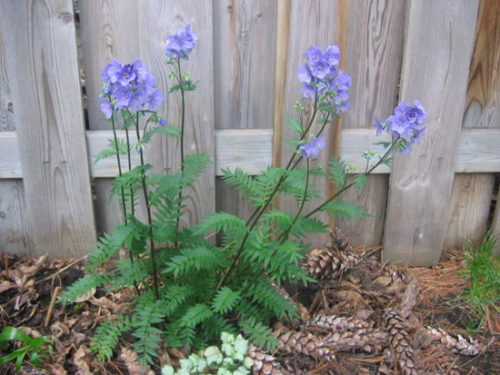
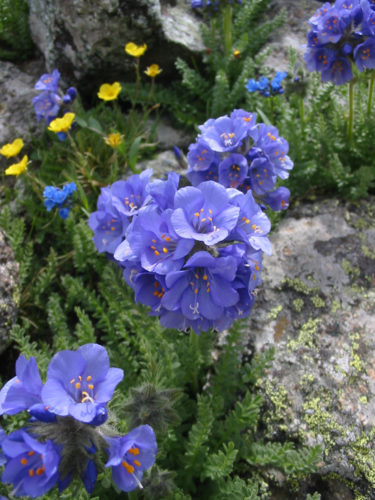












 Start a discussion ...
Start a discussion ...